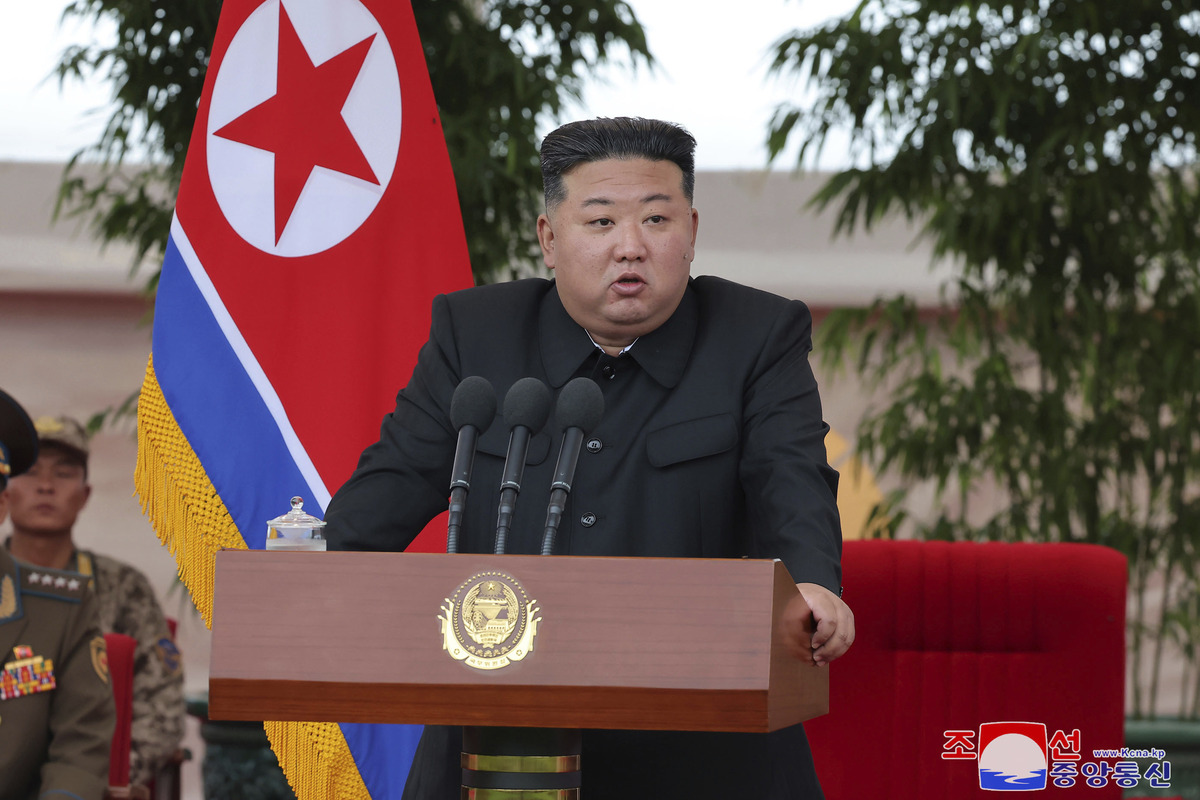Recently, North Korean leader Kim Jong Un presided over a ceremony to transfer 250 tactical ballistic missile launchers to the border with South Korea, as reported by state media. During the event held in Pyongyang, Kim highlighted his personal role in designing these new weapons, framing them as part of North Korea’s commitment to enhancing its self-defense capabilities, according to the Korean Central News Agency (KCNA).
These launchers are intended for potential strikes against South Korea, with Col. Lee Sung-joon from Seoul’s Joint Chiefs of Staff confirming their purpose as a possible threat to the South. The South Korean military noted that the placement of such assets near the border indicates they are meant for short-range operations.

Korean Central News Agency/Korea News Service via AP
The situation between North and South Korea has become increasingly strained, especially as North Korea strengthens ties with Russia while advancing its missile and nuclear programs. In December, Kim announced a shift to a war footing for military production in light of escalating tensions on the peninsula.
Earlier this year, North Korea abandoned its previous stance of reconciliation with the South, labeling Seoul a sworn enemy. South Korea and Japan have expressed serious concerns over North Korea’s activities, considering them a significant threat to national security and seeking assistance from the U.S., resulting in further irritation from Pyongyang.
On his recent visit, Kim spoke of bolstering the military’s strength due to the evolving security landscape, exacerbated by perceived confrontations from the U.S. and its allies. Joseph Dempsey from the International Institute for Strategic Studies noted that images suggest the launchers could be of the Hwasong-11D variety, capable of carrying tactical nuclear warheads. However, it remains uncertain if North Korea possesses the capability to produce the number of missiles these launchers could theoretically fire.
Dempsey stated, “It’s highly improbable that North Korea has anywhere near that many tactical nuclear warheads.” The country has been vocal about ramping up its weapons production, testing various new systems, including intercontinental ballistic missiles and a reported “underwater nuclear weapon system” designed to generate a nuclear tsunami.
Moreover, North Korea announced the introduction of its first “tactical nuclear attack submarine” in September 2023, although skepticism about its real capabilities exists among Western analysts. Additionally, the country has launched its first military spy satellite, claiming it can collect images of sensitive sites.
In response to the increasing military activity, South Korea resumed live-fire drills near the border earlier this year, marking a return to such exercises after a significant hiatus triggered by North Korea’s provocative balloon launches.
